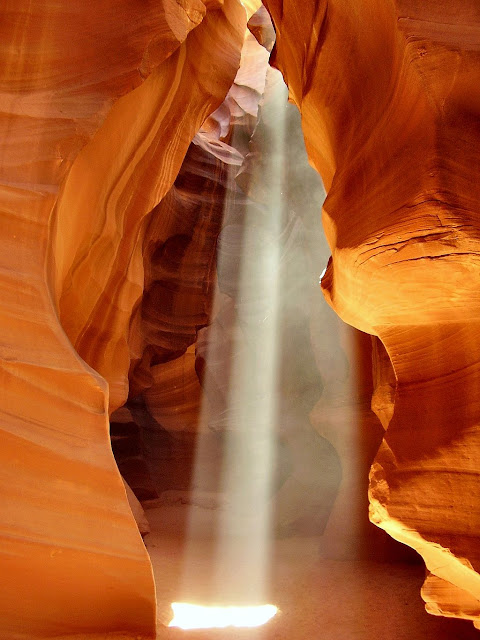Day 17 (D-44) Mesa Verde National Park
Day 17 (D-44) Mesa Verde National Park
During the afternoon of this fifth day of our trip, we will be arriving at our second American National Park, Mesa Verde.
Here is a little general information, followed by more detailed geological information, if you are interested.
A national park is a park in use for conservation purposes. Often it is a reserve of natural, semi-natural, or developed land that a sovereign state declares or owns. Although individual nations designate their own national parks differently, there is a common idea: the conservation of 'wild nature' for posterity and as a symbol of national pride.
It was in 1906 that the Congress and President Theodore Roosevelt established The Mesa Verde National Park.
In this national park, there are more than 5,000 sites, including 800 cliff dwellings. Mesa Verde (Spanish for "green table") is best known for structures such as Cliff Palace, thought to be the largest cliff dwelling in North America.
We'll do our computer visiting of some of these places in the next few blog entries to follow.
My best,
Jane
PS. For geology buffs and anyone who is curious to discover a little about the geology of Mesa Verde: This expression, Mesa, is actually a misnomer. The correct geological term for the area is a cuesta, not a mesa. Mesas are isolated, flat-topped highlands with steeply sloping sides or cliffs, having at the top much harder rocks which are resistant to erosion. The cap protects the softer underlying slopes or cliffs from erosion. The only difference between a cuesta and a mesa is that a cuesta gently dips in one direction. Mesa Verde is inclined slightly to the south at about a 7° angle. This cuesta is made up of many separate, smaller “mesas” situated between the canyons. Although technically we should call the park “Cuesta Verde,” convention dictates that we use the term “mesa” when describing the area.
The 7° angle dip of Mesa Verde is essential to the formation of the alcoves in which most of the cliff dwellings are found. The alcoves provided the spectacular preservation of this architecture. Alcoves are large, arched recessions formed in a cliff wall. An alcove is not the same as a cave. Caves are underground chambers, not found in Mesa Verde. Alcove formation is caused by water that seeps into cracks, freezing and thawing in them, eventually expanding and slowly pushing the rock apart. These portions fall off in blocks, creating the alcoves you now see. These blocks of sandstone were shaped and used by the Ancestral Puebloans in the construction of their homes.
Alcove formation is assisted by water that is absorbed into and percolates through pores in the sandstone. The water eventually reaches a layer of shale, which is much less porous, or absorbent, than the sandstone. The water cannot easily pass through the shale, and so gravity guides it along the top of this layer to the cliff face. Seep springs are found where water emerges from the cliff face, directly above the shale layer. These seeps provided a continuous source of water for the residents of the alcoves. The water comes in constant contact with the sandstone in these areas and dissolves the calcium carbonate that holds the sandstone together. Eventually this causes the sandstone to fall apart and crumble into individual grains of sand. The grains are washed away during rainstorms or blown away by the wind. This silt and sand was used by the Ancestral Puebloans as part of their mortar mix. A side view of the alcoves reveals that they are c-shaped.
This made it necessary for the Ancestral Puebloans to backfill the floors of the alcoves to obtain a flat surface for building. The process of alcove formation continues today, which is one reason that stabilization work is an important part of the preservation efforts at Mesa Verde.
(Information taken from the National Park Service: https://www.nps.gov/meve/planyourvisit/upload/geology_web.pdf )
…To my travelers: Don’t worry, I’m sure our guide will give us this information…in English AND in French!!
_____________________________________________________
--cliff dwellings = In archeology, cliff dwellings are houses or places to live formed by using alcoves in high cliffs (falaises), with more or less excavation or with additions in the way of masonry.
--buff = a person who knows a lot about and is very interested in a particular subject
--actually = Don’t forget, this is a faux ami. = in fact, NOT actuellement
--misnomer = a wrong name or inappropriate designation
--steeply sloping = en forte pente
--cap = Here, caprock = Caprock is a harder or more resistant rock type overlying a weaker or less resistant rock type.
--underlying = positioned under the surface of something
--to dip = to go down to a lower level
--slightly = a little
--seeps = flows slowly through something; s’infiltrer
--cracks = fissures
--to thaw = dégeler
--to expand = se dilater
--sandstone = grès
-- to percolate = to move through a substance by going through very small spaces within it; to seep
--shale = soft finely stratified sedimentary rock that formed from consolidated mud or clay and can be split easily into fragile plates. schiste argileux
--seep springs = springs with small flow rates in which the source water has filtered through permeable earth
--crumble = I’m certain you know this desert! The verb: to break into small pieces, or to make something break into small pieces
--silt = sand or soil that is carriedalong by flowing water and then dropped, especially at a bend in a river or at a river’s opening
--to backfill = remblayer
This was a big job for me today!




Comments
Post a Comment